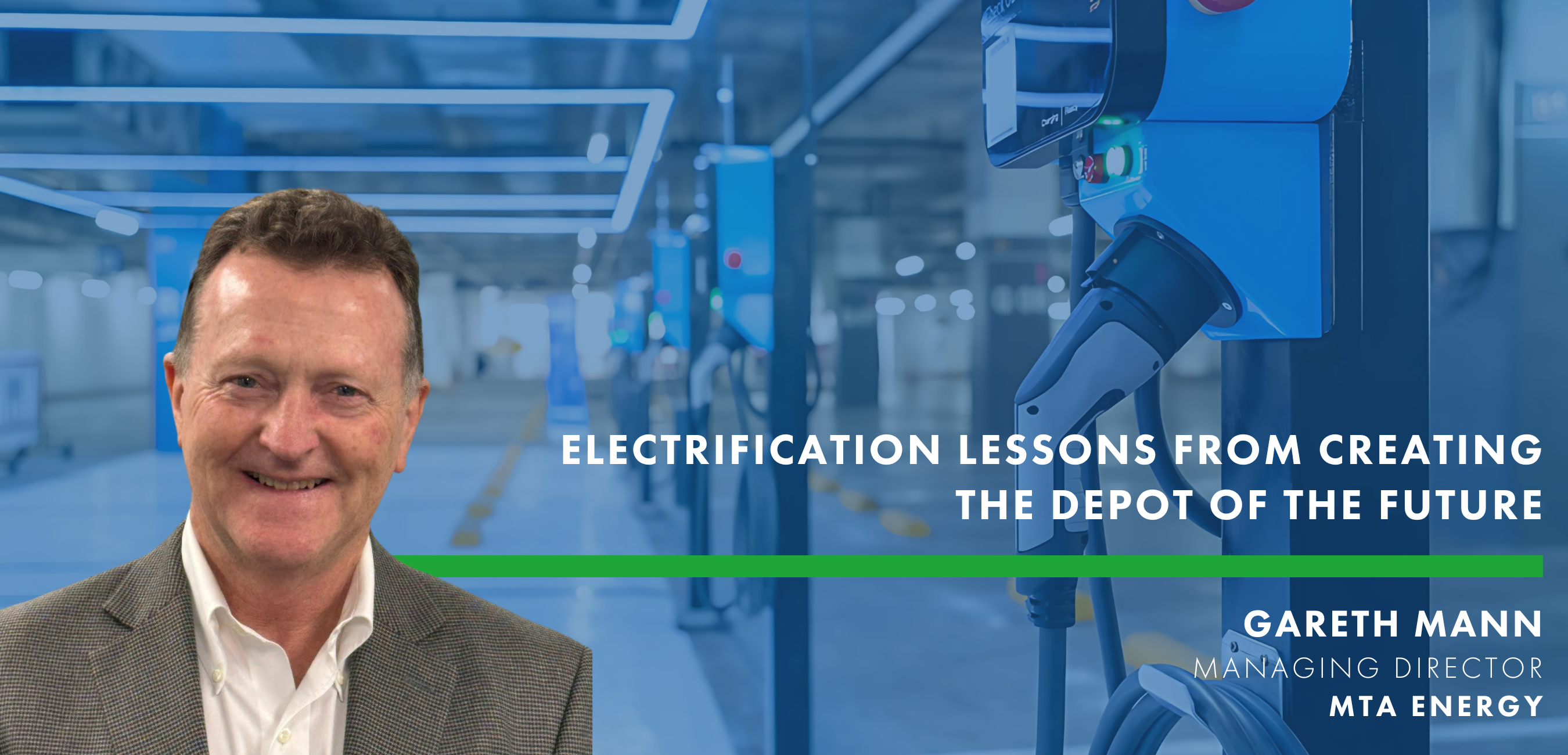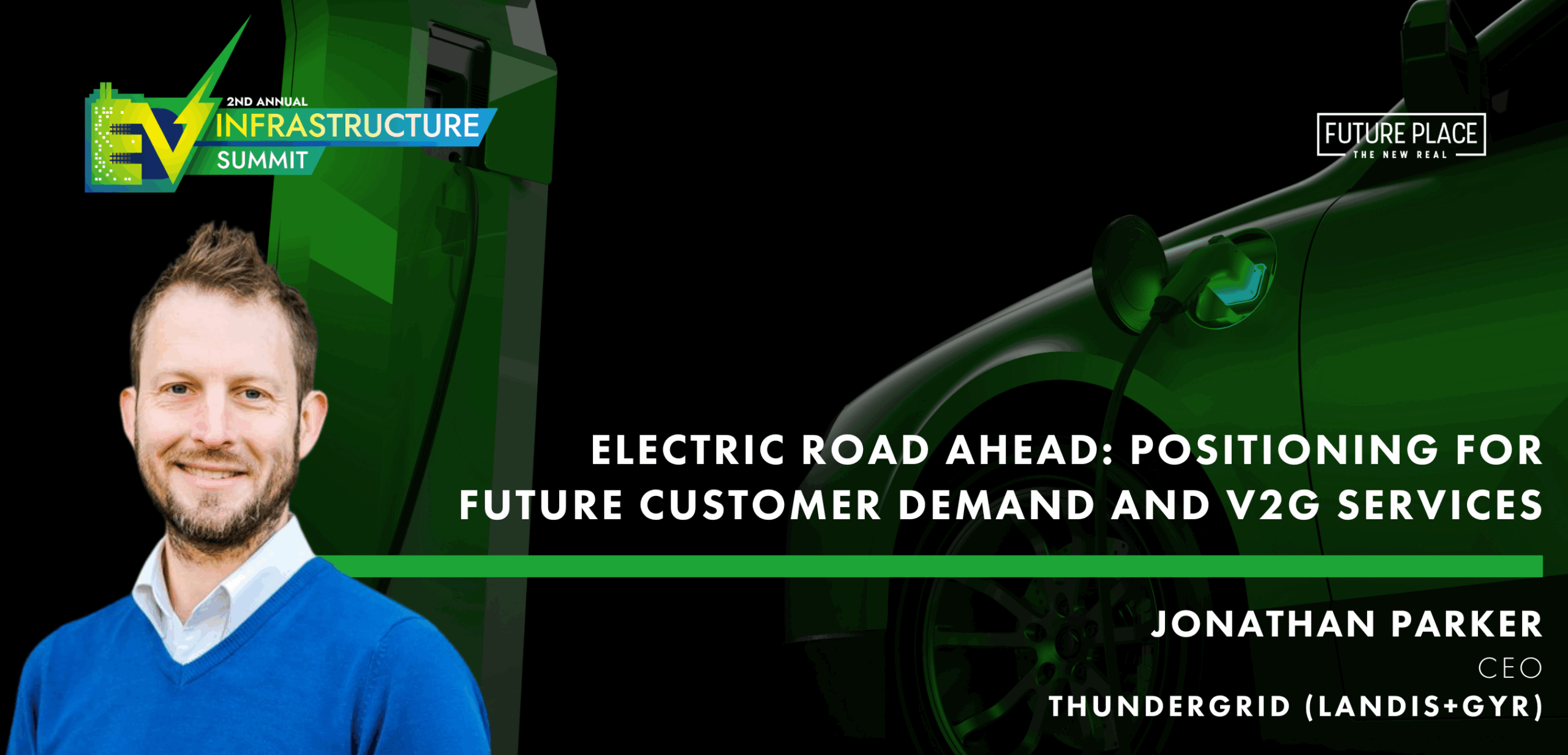Gareth Mann and MTA Energy were integral to the development and implementation of the joint $42 million Team Global Express (TGE) Arena “Depot of the Future” project at Bungarribee, NSW. The industry leading project involved integrating 60 EV trucks into a 240-truck fleet with MTA Energy overseeing the project development and infrastructure upgrades including the design, installation and commissioning of a 500 kW/1 MWh battery energy storage system in conjunction with JetCharge charging infrastructure and associated communication networks. He led the development of the data-acquisition systems and dashboards for real-time site visibility and now MTA Energy, as the site’s electricity retailer, delivers 100% renewable power while using the BESS for load optimisation and demand management against the wholesale electricity market. Gareth brings deep expertise in the energy sector including in depot electrification, smart-grid integration and the commercial dynamics of EV charging as an energy retailer. We asked him to give some details on this project.
Depot Electrification Lessons:
What were the most critical learnings from integrating 60 EV trucks and a large-scale BESS at the Bungarribee depot, and how can other fleet operators apply these insights?
The two most critical pieces of information were the proposed fleet operating cycle, which will drive the charging infrastructure (type, size, KW etc) and, importantly the available duration for charging. Then considering available real estate for the fleet parking and charging.
It is from this information that the design of infrastructure, cost and proposed electricity supply commences. This clearly includes decisions around infrastructure upgrades vs new facilities and the ultimate economics of the proposed project. For example, the TGE project ultimately decided to upgrade the existing site infrastructure based upon excess capacity in the site supply transformers and the project timing certainty this delivered. But the flow on effect involved several complex yet required site electrical infrastructure upgrades. For other fleet operators looking into EV charging, early-stage clarity on operational requirements and site constraints is vital. This enables a tailored, cost-effective infrastructure solution and reduces project risk and delays.
Infrastructure Design & Installation:
Which technical or logistical challenges did you face during the charging-infrastructure upgrade, and what best practices emerged for future depot projects?
Key challenges included the remote location of the charging bays from the site’s supply transformers and integrating existing cabling while meeting Australian Standards for voltage drop, harmonics, and protection. Communications, though not initially a focus, became critical due to the need for redundant networks to maintain connectivity in a remote area. A major success factor was strong operational involvement early in the design phase—covering traffic flow, safety, and vehicle utilisation. This ensured infrastructure was tailored to the depot’s actual needs and future operations. On the subject of best practices, the main takeaways would be: Design infrastructure around real-world operational requirements, ensure early coordination across electrical, civil and communications planning and engage operational teams early to de-risk and streamline delivery.
Data-Driven Operations:
How have your data-acquisition platforms and dashboards improved operational decision-making, and what metrics should depot managers prioritise?
The project integrated multiple standalone systems—from chargers (e.g. JetCharge), vehicle platforms (24 Fuso eCanters, 36 Volvo eFLs), and the BESS—each with its own controls and analytics. A unified dashboard was developed to provide a single-screen overview, improving situational awareness and simplifying day-to-day management. Operators can then drill down into individual systems as needed for deeper analysis. For the Depot Managers, some key metrics that we have seen to be of significant importance include: Vehicle state of charge and charging status when connected, charger utilisation and availability, BESS performance and overall energy usage.
Renewable Retail Model:
As the site’s electricity retailer providing 100 % renewable supply, what contractual or market mechanisms have been most effective for balancing cost-competitiveness and sustainability?
While the site had existing solar PV, it couldn’t meet the full load of the EV fleet and depot. To achieve 100% renewable supply, we procured and voluntarily surrendered LGCs to offset all grid electricity use. This approach offered procurement flexibility and allowed precise matching to actual site consumption—critical given the uncertain future load profile after project completion.
BESS for Grid Services:
In what ways is your battery energy storage system being leveraged for load optimisation and demand-response, and how do you see these capabilities scaling across Australia’s EV-charging network?
The BESS primarily manages site load to prevent oversupply through existing infrastructure and reduces peak demand during tariff-defined demand windows. This supports both operational efficiency and cost control.
MTA Energy sees strong potential for BESSs in demand management and virtual power plants (VPPs), helping to stabilise the grid as the energy sector transitions. The Bungarribee example highlights how behind-the-meter storage can scale to support broader EV-charging networks and private charging infrastructure.

Gareth Mann
Managing Director, MTA Energy
Gareth will be speaking at our upcoming EV Infrastructure Summit in Sydney on 17-18 June. It is dedicated to all things EVCI for property owners and fleets.





